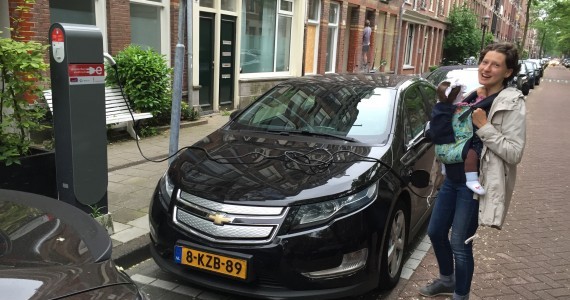
A new report from the International Council on Clean Transportation (ICCT) shows quite clearly the huge differences in EV incentives around the globe. And also the pronounced differences in the effectiveness of some of the programs.
From sales-tax exemptions, to purchase rebates, to income-tax credits, to free-parking, it seems like good incentives for EV adoption can be found nearly everywhere nowadays — but which of these are the most effective?
That’s part of what the new report set out to find, but it’s a hard question to answer. One thing very clear in the report, though, is that a combination of many different incentives seems to be the most effective, as is clearly visible in strong EV markets like Norway and the Netherlands.
While total plug-in vehicle sales growth worldwide has been quite substantial in recent years (sales in 2013 were near double those of 2012, which were double those of 2011), much of that growth has been limited to the markets that have the strongest incentives. For instance, the previously mentioned EV haven of Norway. With the large tax breaks available in the country, it’s quite often cheaper to buy an EV than it is to buy a gas-powered car — which would on its own be enough to influence most buyers, but then there are also a number of other good incentives available — parking and roadway perks mostly — making the big EV sales in the Northern European country make a ton of sense.
In 2013, plug-in vehicles made up 6% of Norway’s total vehicle sales — a number that will very likely climb in 2014. The Netherlands is right in the same league, with plug-in vehicles representing 5.6% of total vehicle-sales. California is as well, with plug-in vehicles making up 4% of total vehicle sales last year. All these regions utilize a varied combination of incentives.
Contrast this with a country like Germany, where the incentives on offer just aren’t that substantial and EV sales are quite weak.
Of course there are also markets where incentives are quite good but sales still aren’t that great, like the UK.
GreenCarReports notes:
There, plug-in cars account for only 0.2% of total vehicle sales. That’s despite a strong £5,000 subsidy (almost $8,500, at current exchange rates) per vehicle, exemption from the country’s CO2-based vehicle taxation system, and exemption from London’s CO2-based congestion charge scheme.
But, generally speaking, the findings of the report are that strong, varied incentives support sales quite well, but that they need to be well suited to their particular market.
For example, in countries with relatively high sales tax and vehicle registration fees (the Netherlands), exemptions from these fees can be strong sales drivers. Or in regions with substantial traffic problems (like LA), access to carpool lanes can be.
For more information on the reasons behind the high-demand in Norway, see our previous coverage that discusses the tax-breaks on offer, the road privileges, the free parking; the high taxes on gasmobiles; actual EV user findings on the top incentives; the highly developed charging infrastructure; and the opinion of Nissan’s head of corporate planning for Europe.
And for the most recent information on the fast-growing market — which saw nearly 1500 EVs sold just in a march — see: Norway’s Insane March Plug-in Car Sales
EV Incentives Effective, Especially When Diverse was originally published on EV Obsession.




